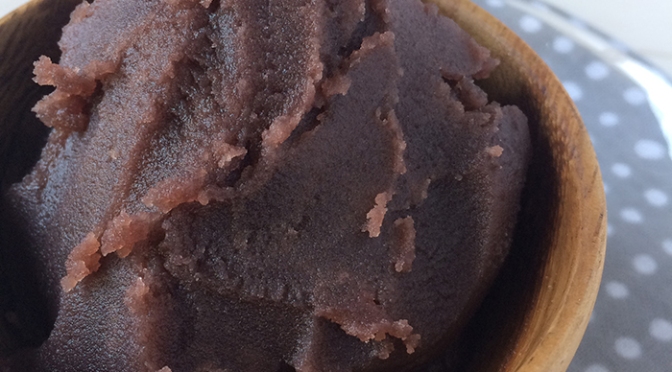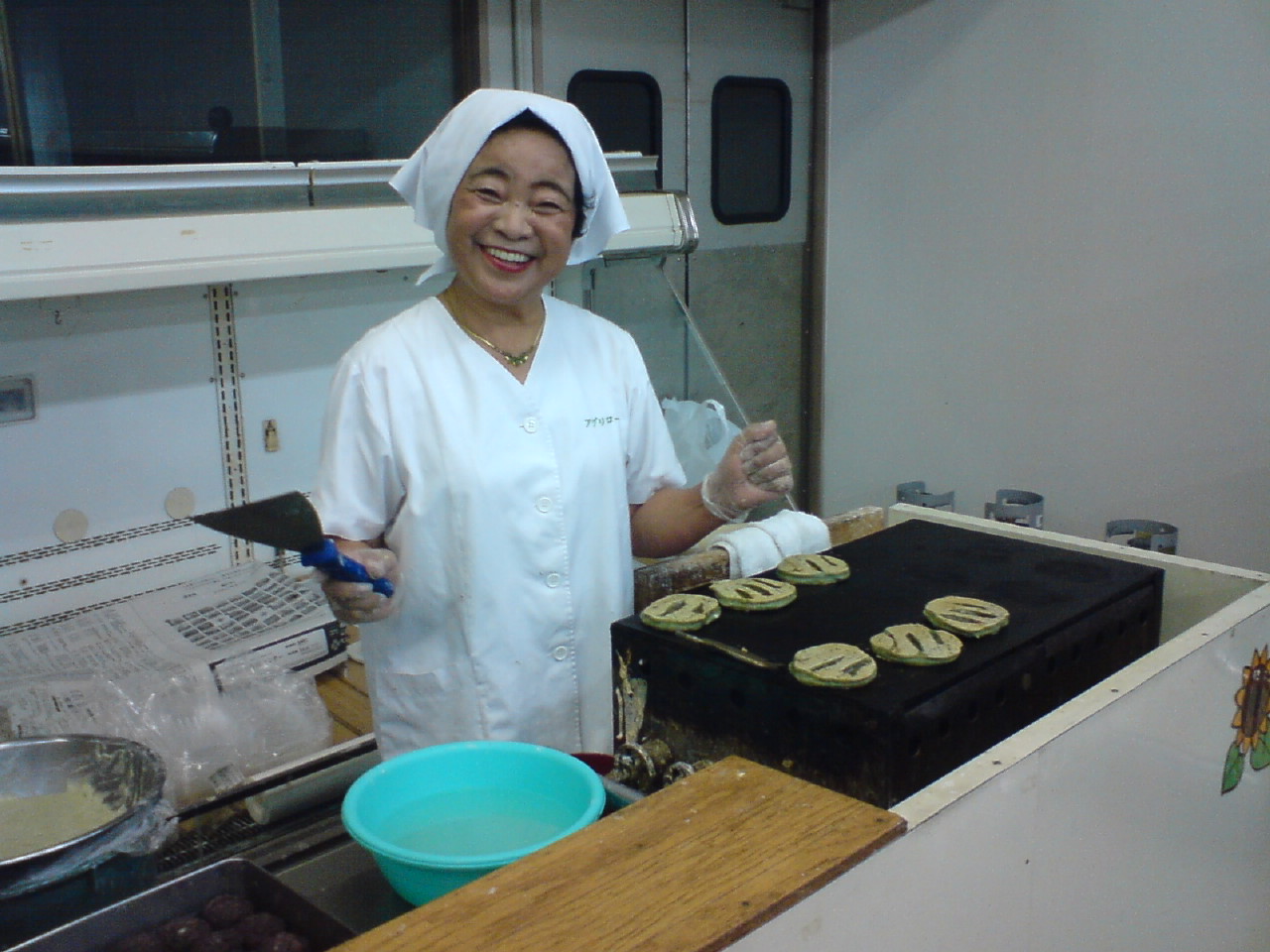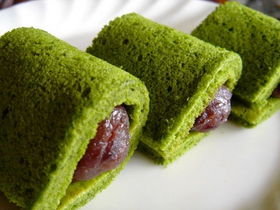
One main ingredients in traditional Wagashi/Japanese Cakes is “anko/餡子” (or more simply “an”) which can be translated as “sweetmeats” or “bean jam”.
Actually few people know that it was first conceived and made in a temple in Okitsu, Shimizu Ku, Shizuoka City!
I would like here to introduce a simple way to make one’s own “anko” at home:
INGREDIENTS:
Azuki/Adzuki/red beans (in Japanese: 小豆): 150 g
Sugar: 150g
Salt: a little
RECIPE:
a) Wash azuki lightly. Put in a large basin with an equal amount of water and turn on heat to high.
b) Bring to boil. If beans level is higher that of water, add water till beans are completely covered. Let simmer. Add water 2 or 3 times as soon as the water does not cover completely the beans and this until beans stop floating on water.
c) Drain beans, put them back into basin with same amount of water and turn fire to high. Repeat a) operation.
d) Cook as c) for 40~60 minutes.
e) Mash azuki beans lightly. Add sugar. Simmer and stir to mix, making sure the jam does not overboil.
f) Add a little salt (to your taste) and mix.
Let cool completely.
You can eat it as it is of course, but you will need it to make your cakes!
You can either sieve it to make it a very fine paste, sieve a part and mix it with the unsieved part, or use it as it is. In any case it will be easy to fashion!


Quand on parle de pâtisseries japonaises, on ne peut oublier de mentionner l’anko/餡子 (ou an en japonais). En français on dira pâte de haricots rouge, ici le vocabulaire français est plus limité que celui de langue anglaise, avec ses “sweetmeats”, “bean jam” ou “red bean jam” bien plus parlants.
Peu de gens savent que Shizuoka fut pionnière dans l’élaboration de cette confiture, à Okitsu, arrondissement de Shimizu.
Voilà une recette simple et efficace pour les grands et les petits.
INGREDIENTS:
Haricots rouges Azuki( en japonais : 小豆): 150 g
Sucre: 150g
Sel: un petit peu
RECIPE:
Lavez légèrement les haricots, mettez-les dans un récipient contenant à peu près la même quantité d’eau que d’haricots. Ensuite réglez le gaz sur “élevé”.
Quand l’eau sera en ébullition il faudra que les haricots soient totalement submergé, donc veillez à ajouter de l’eau si nécessaire. Laissez mijoter. Ajoutez de l’eau 2 ou 3 fois dés que les haricots dépassent de l’eau et jusqu’à ce qu’ils flottent légèrement.
Egouttez tout le monde et recommencer l’opération précédente.
Laissez mijoter entre 40 minutes et une heure.
Pour la suite il faut écraser légèrement les haricots. Ensuite ajoutez du sucre, et faites mijoter tout en remuant, attention à ce moment là que cela ne boue pas trop.
C’est à ce moment que l’on ajoute le sel, que l’on mélangera ensuite. Enfin laissez refroidir et ce sera prêt.
Vous pouvez déguster la pâte une fois finalisée, mais bien entendu le mieux est de l’utiliser dans des gâteaux, dorayakis, taiyakis etc…
Vous pouvez choisir aussi de la passer au tamis pour savoir si vous voulez garder la texture en morceaux, ou en faire une pâte plus fine !

RECOMMENDED RELATED WEBSITES
So Good Sushi Restaurant in Nice France
Navigating Nagoya by Paige, Shop with Intent by Debbie, BULA KANA in Fiji, Kraemer’s Culinary blog by Frank Kraemer in New York,Tokyo Food File by Robbie Swinnerton, Green Tea Club by Satoshi Nihonyanagi in Shizuoka!, Mind Some by Tina in Taiwan, Le Manger by Camille Oger (French), The Indian Tourist, Masala Herb by Helene Dsouza in Goa, India, Mummy I Can Cook! by Shu Han in London, Pie
rre.Cuisine, Francescannotwrite, My White Kitchen, Foodhoe, Chucks Eats, Things that Fizz & Stuff, Five Euro Food by Charles,Red Shallot Kitchen by Priscilla,With a Glass, Nami | Just One Cookbook, Peach Farm Studio, Clumsyfingers by Xethia, PepperBento, Hapabento, Kitchen Cow, Lunch In A Box, Susan at Arkonlite, Vegan Lunch Box; Tokyo Tom Baker, Daily Food Porn/Osaka, Only Nature Food Porn, Happy Little Bento, J-Mama’s Kitchen, Cook, Eat, Play, Repeat, Bento Lunch Blog (German), Adventures In Bento, Anna The Red’s Bento Factory, Ohayo Bento,
Must-see tasting websites:
-Sake: Ichi For The Michi by Rebekah Wilson-Lye in Tokyo, Tokyo Through The Drinking Glass, Tokyo Foodcast, Urban Sake, Sake World
-Wine: Palate To Pen, Warren Bobrow, Cellar Tours, Ancient Fire Wines Blog
-Beer: Another Pint, Please!, Beering In Good Mind: All about Craft Beer in Kansai by Nevitt Reagan!
ABRACADABREW, Magical Craftbeer from Japan
-Whisky: Nonjatta: All about whisky in Japan by Stefan Van Eycken
-Japanese Pottery to enjoy your favourite drinks: Yellin Yakimono Gallery







